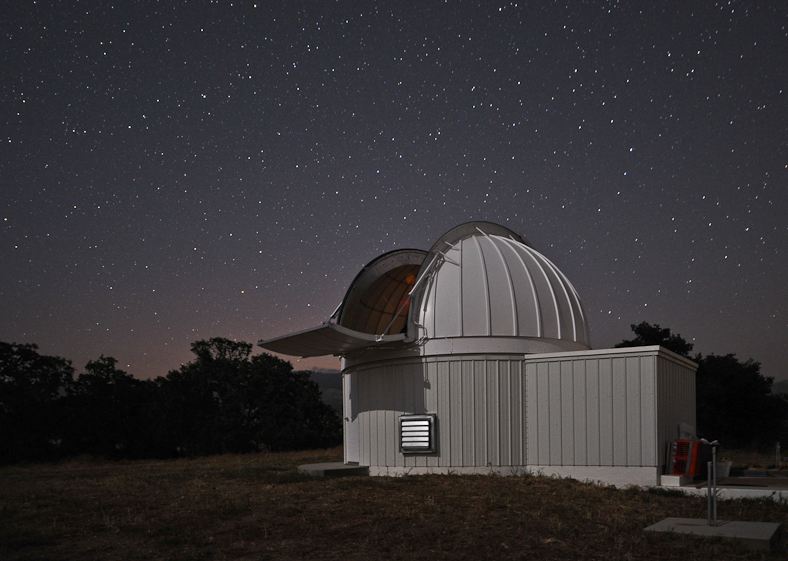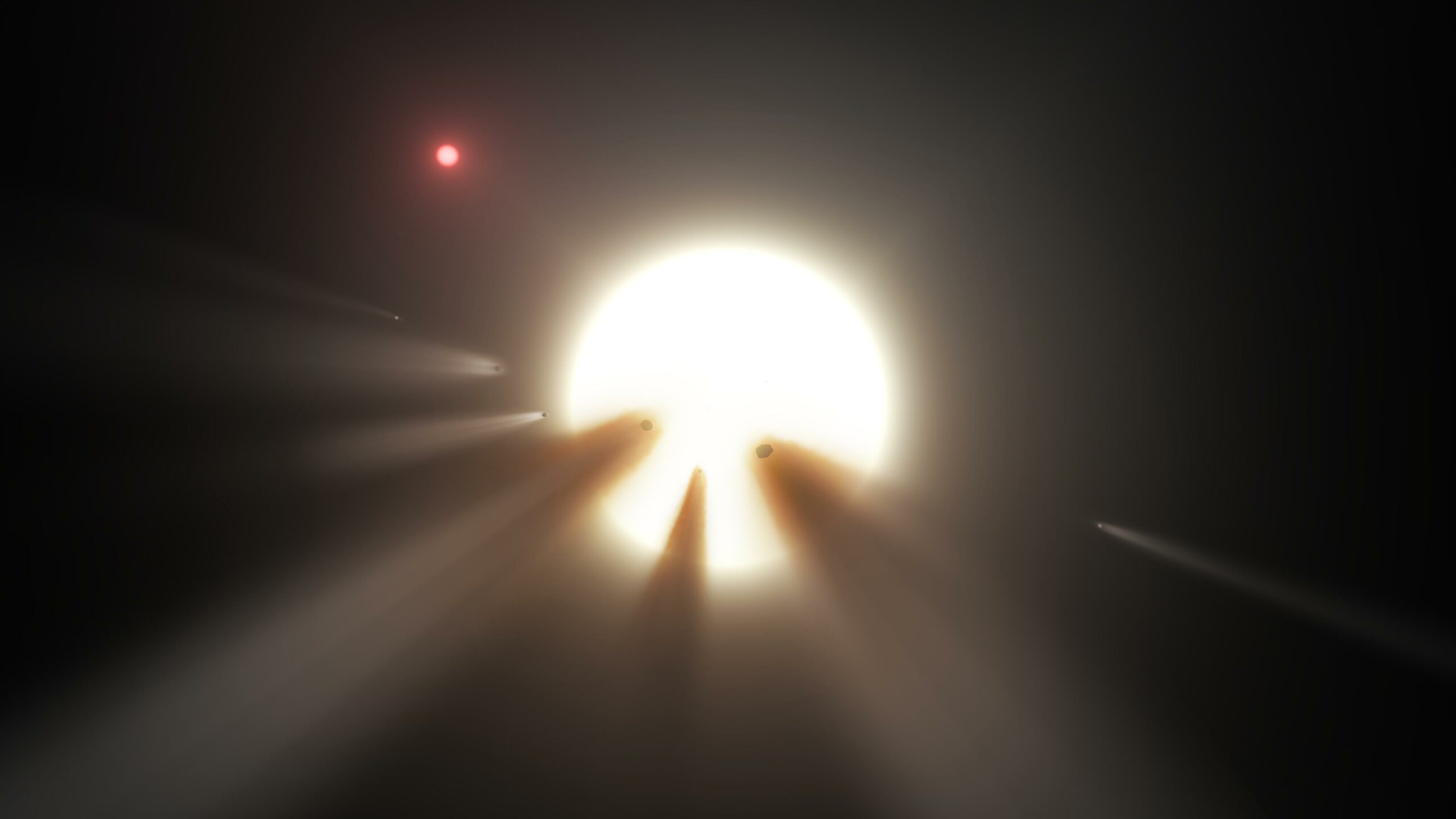

A star 1,480 light-years away from Earth is at the center of a big scientific conundrum over whether its weird light patterns could indicate intelligent life around it. And it’s possible that nobody would have noticed the star’s weird behavior if it hadn’t been for crowd sourcing.
It was a group of citizen scientists who noticed that the star KIC 8462852 occasionally dims by as much as 20 percent. That’s way too big to be a passing planet, and scientists are at a loss to explain it. Some have suggested a group of mega-comets is passing in front of the star, while others have suggested aliens may have built a massive structure around the star to harness its energy. Neither explanation quite fits the data, though.
Now, in an effort to get to the bottom of the mystery, the research is going from crowd sourcing to crowdfunding. Yale astronomer Tabetha Boyajian, who’s heading up the KIC 8462852 research, has set up a Kickstarter to find out more about what’s causing this weird dimming.
It’s not easy to get access to the world’s best telescopes. Since all astronomers want to use them, there’s an application process, and most will not win a spot in the lineup. Even if they do, they might only be able to use the telescope for a few hours or days at a time. However, Boyajian and her team don’t know when KIC 8462852 is going to dim again, so they want to set up a continuous monitoring system.

The team has been working with the Las Cumbres Observatory Global Telescope Network–a privately run network of telescopes set up around the world, so that as the planet spins they can still monitor whichever part of the sky you’re interested in. The network donated 200 hours of telescope time to Boyajian’s team, which will allow them to observe KIC 8462852 until the end of summer. After that, the team can’t afford to pay for the observations.
That’s why they’re using Kickstarter to try to raise $100,000, which would ensure continuous monitoring for a year. It would give the team two hours of telescope time per night, which should be enough to catch the star in action if the light dips again.
Witnessing another transit could help the team learn more about how often the dips occur, how much light is blocked, and most importantly, what the heck is blocking the light.
If the light dips were caused by comets, scientists would expect to see extra infrared radiation coming from the star. Same goes for the alien megastructure hypothesis, so it doesn’t seem likely that either is a fitting explanation. (In addition, astronomers haven’t detected any usual light or radio signals that might indicate an alien presence.)
If the team can spot the dipping as it happens, they’ll alert a network of astronomers around the globe, who can turn their telescopes toward the star as well to collect more data, and hopefully, an explanation.
“[The brightness dips are] showing us the way for some whole new mechanicsm, previously unimagined,” astronomer Bradley Schaefer writes about the project on the Kickstarter page. “The only way to advance is to catch the star dipping again, when we are prepared to immediately throw everything at it.”